
Kadir Has University Herkese Acik Seminer Istanbul, 31 July 2019
University Education and Research
at MIT Physics Department
Mehran Kardar
Some affiliated labs with mostly by government support
Laser Interferometer Gravitational Wave Observatory (LIGO)
The Kavli Institute for Astrophysics & Space Research at MIT
Division structure
![]() Statistical Physics and Immunology
Statistical Physics and Immunology
Professor Arup K. Chakraborty (Chem. Eng., Chemistry, Physics)
HIV/AIDS in Africa

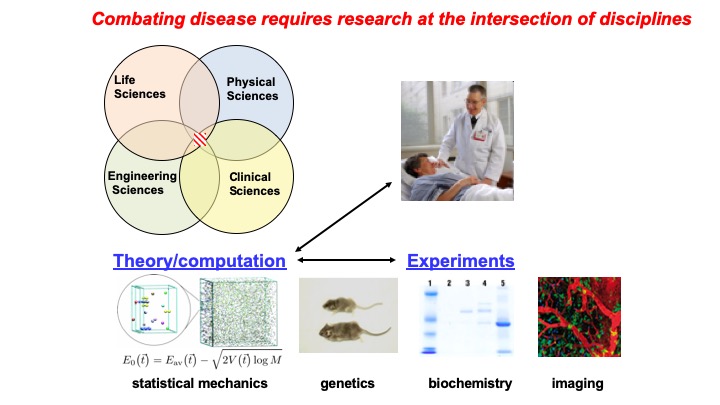
Synthetic vaccines
![]() Several strategies are in development for vaccination with synthetic nano-particles coated with target antigens:
Several strategies are in development for vaccination with synthetic nano-particles coated with target antigens:
Our results suggest that most potent antibodies are obtained at an optimal target density.
![]() The low spike density of HIV may have evolved because of the effects of T helper cell depletion on affinity maturation
The low spike density of HIV may have evolved because of the effects of T helper cell depletion on affinity maturation
A. Amitai, A.K Chakraborty, and M. Kardar, PLOS Computational Biology (2018) (off-line)
Broadly neutralizing Antibodies (bnAbs)
![]() Due to its high rate of mutation rate HIV evades antibodies and challenges vaccination protocols.
Due to its high rate of mutation rate HIV evades antibodies and challenges vaccination protocols.
The HIV spike, the target of most antibodies, is shielded by easily mutable (low fitness cost) residues.
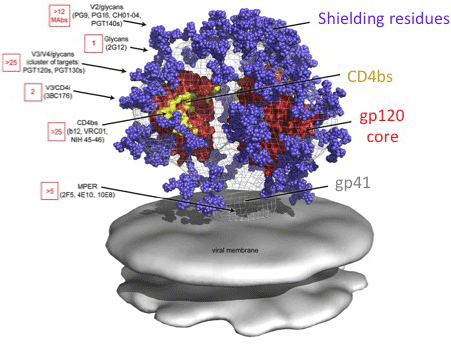
![]() Rare individuals, after several years and in low amounts, produce broadly neutralizing Antibodies (bnAbs),
Rare individuals, after several years and in low amounts, produce broadly neutralizing Antibodies (bnAbs),
capable of inactivating a broad range of viral mutants by targeting the conserved (CD4 binding) region.
![]() Can we devise a strategy to guide affinity maturation to create bnAbs?
Can we devise a strategy to guide affinity maturation to create bnAbs?
A potential strategy is to vaccinate with multiple mutant spikes sharing the same conserved elements.
Our computational model of affinity maturation suggests that a cocktail of such variants leads to low yields, with little breath:
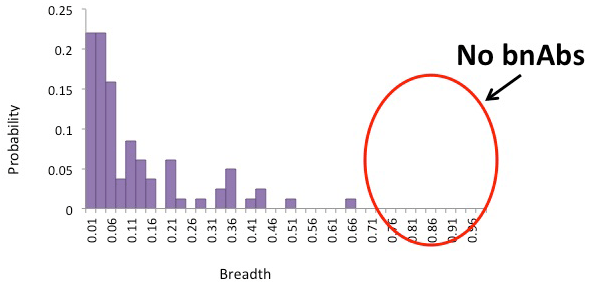
Simultaneous presence of variant antigens leads to conflicting selection forces that frustrate affinity maturation
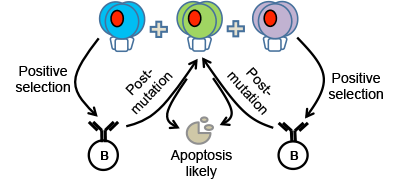
Simulations suggests successful outcome if the antigens are administered in sequence
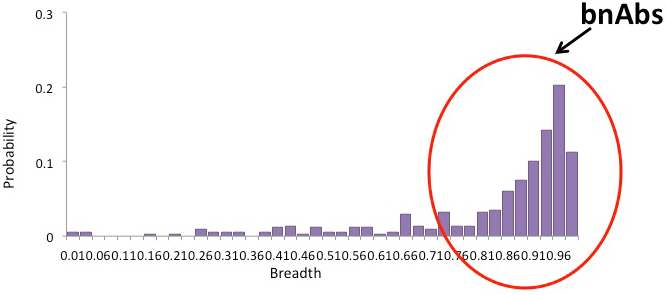
Sequential immunization can focus B cell interactions on the conserved residues
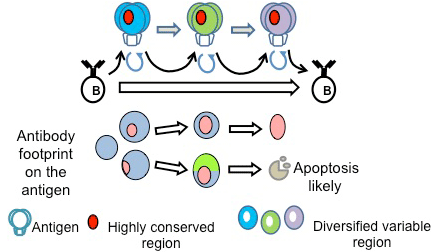
This prediction was successfully tested in mice (with Wittrup & Burton labs) [Wang et al, Cell 160, 785 (2015)] (off-line)
Essence of the challenge is to avoid termination of affinity maturation as well as a specialized outcome
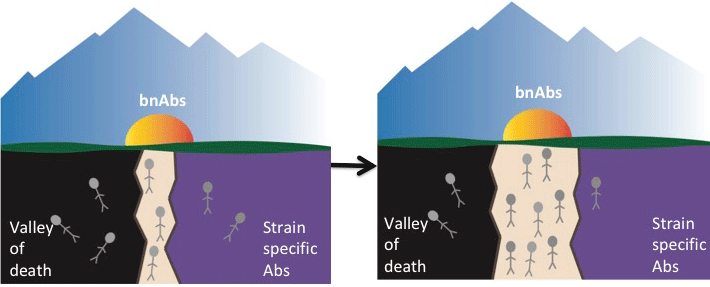
![]() A general strategy to elicit (control) bnAbs must:
A general strategy to elicit (control) bnAbs must:
Avoid frustration (leading to extinction of GC) [J.S. Shaffer, P.L. Moore, MK & AKC, PNAS 113, E7039 (2016)] (off-line)
Avoid rapid specialization to mutable epitopes
Boost B-cell lineages that can mutate towards conserved epitopes (delayed reward)
![]() Human immunodeficiency virus infects CD4 cells of the immune system: (wikipedia)
Human immunodeficiency virus infects CD4 cells of the immune system: (wikipedia)
![]() HIV life cycle and associated drug targers: [P.A. Volberding & S.G. Deeks, Lancet 376, 49 (2010)]
HIV life cycle and associated drug targers: [P.A. Volberding & S.G. Deeks, Lancet 376, 49 (2010)]
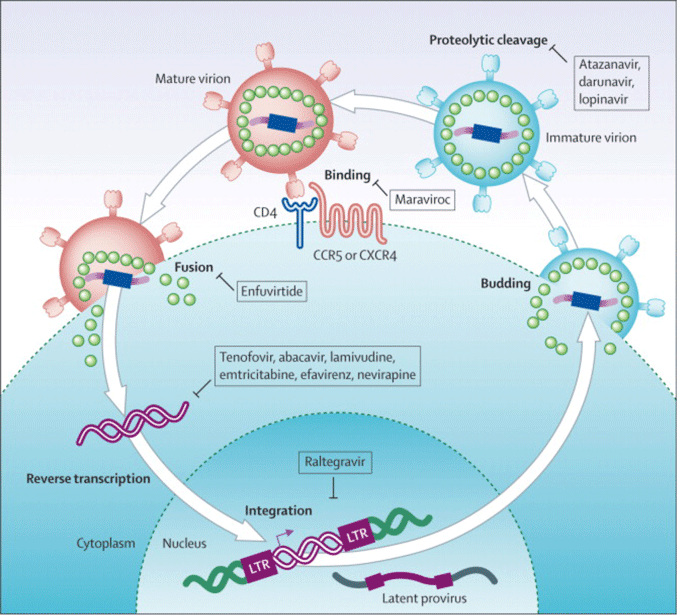
![]() Progress of HIV infection: (wikipedia)
Progress of HIV infection: (wikipedia)
HIV Fitness Landscape
![]() HIV mutates rapidly in host, due to:
HIV mutates rapidly in host, due to:
Large number of replications (1010 virions per day) [Perelson et al, Science 271, 582 (1996)]
Transcription errors (10-4 - 10-5 per base per cycle) [Perelson et al, Science 271, 582 (1996)]
Recombination (10-5 per site per generation) [R.A. Neher & T. Leitner, PLOS Comp. Bio. 6, e1000660 (2010)]
![]() There is large sequence diversity: [B. Korber, IAVIReport (2010)]
There is large sequence diversity: [B. Korber, IAVIReport (2010)]
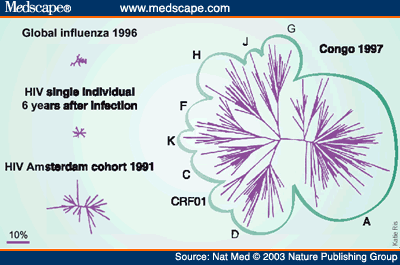
![]() Patient-derived sequences can be used to construct a prevalence landscape, using a
Patient-derived sequences can be used to construct a prevalence landscape, using a
![]() Patient-derived sequence frequencies are outcome of many factors, incluing
Patient-derived sequence frequencies are outcome of many factors, incluing
![]() Empirical evidence suggests that prevalence is a reasonable proxy for replicative fitness
Empirical evidence suggests that prevalence is a reasonable proxy for replicative fitness
[A.L. Ferguson et al, Cell Immunity 38, 606 (2013)] (gag)
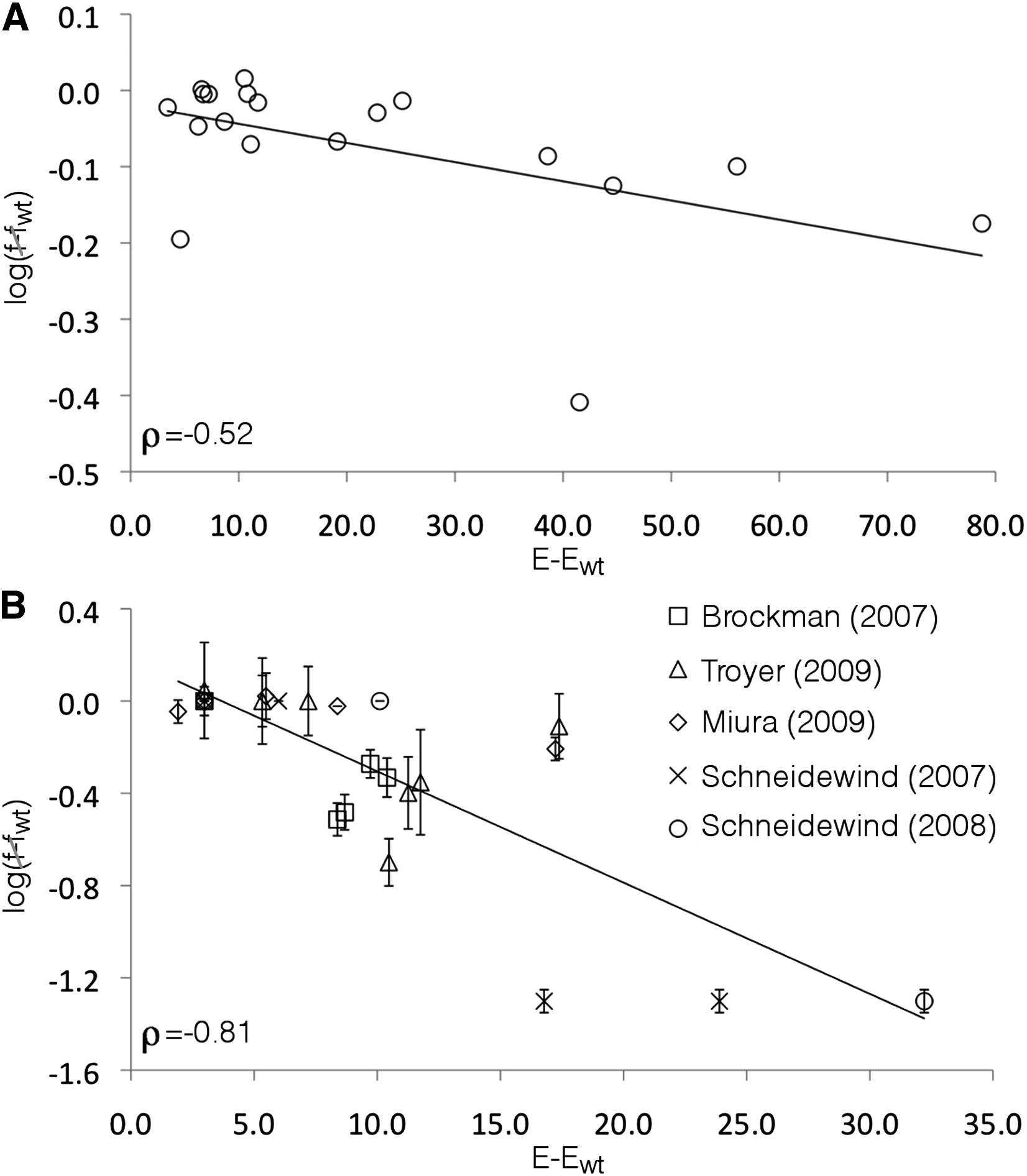
![]() Potential uses of the prevalence landscape as a proxy for the fitness landscape:
Potential uses of the prevalence landscape as a proxy for the fitness landscape:
Immunogenic versus non-immunogenic proteins
Design of vaccines